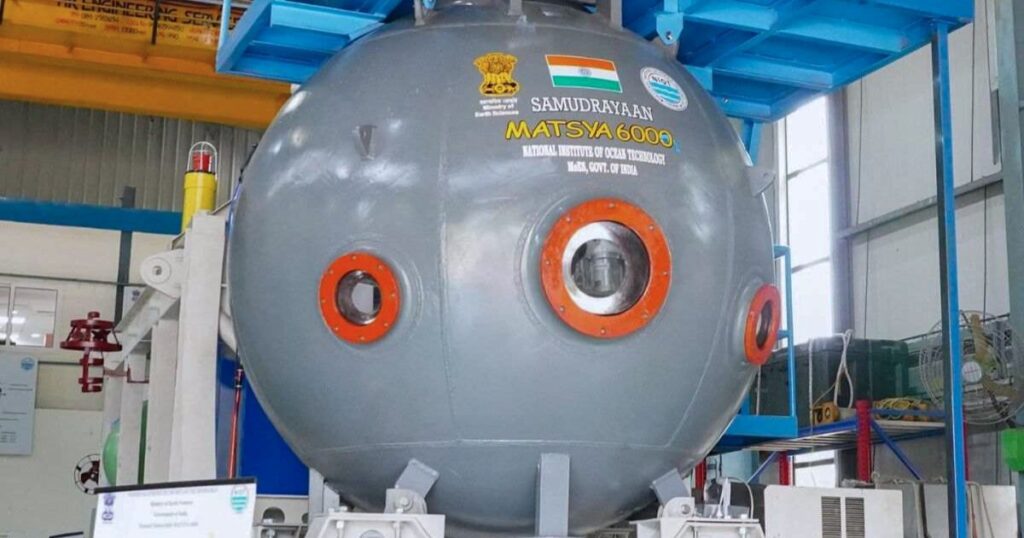Samudrayaan mission set to explore ocean bed by 2025-end, the earth sciences minister Kiren Rijiju has said. Following a successful test on March 9 at a depth of roughly 500 meters in the Bay of Bengal, an underwater acoustic telephone built by the National Institute of Ocean Technology (NIOT) for the submersible project was immediately followed by the minister’s announcement.
An underwater acoustic telephone that was created in-house by the MSS Group of MOES NIOT for manned submersibles has been successfully tested up to 500 meters depth in the Bay of Bengal (BoB) on board the research vessel Sagar Manjusha, according to a tweet from the ministry. The underwater acoustic telephone’s deployment, operation, and functional testing were all completed satisfactorily.”
By the end of the next year, India would dispatch scientists to explore the deep ocean 6,000 meters in its own Samudrayaan, akin to the Gaganyaan mission, which will launch two to three humans into space in 2025. In an interview with a news outlet, Rijiju stated that testing of India’s deep-ocean submersible, “Matsya6000,” which will transport scientists into the ocean’s depths, is “well on course” and may occur by “end of this year.” After reviewing the project, the minister stated that by the end of 2025, scientists should be able to conduct the first shallow water tests.
The undertaking was started in 2021. A variety of research instruments and sensors will be included in the submersible’s arsenal. Its 12-hour operational endurance can be increased to 96 hours in case of necessity. Thus far, nations such as the United States, Russia, China, France, and Japan have executed prosperous deep-ocean crewed missions. Should India’s deep-ocean expedition prove successful, it will join a select group of countries possessing the necessary equipment and vehicles to conduct operations beneath the surface of the ocean.
Samudrayaan Mission

The goal of the Samudrayaan Mission is to create a self-propelled, manned submersible that can transport three people and a variety of research instruments down to 6000 meters in the ocean. Its operational duration is 12 hours, and in an emergency, it can last up to 96 hours.
Through direct intervention, scientific staff will be able to examine and comprehend as yet uncharted deep marine regions thanks to the manned submersible. It will also improve the potential for developing deep-sea man-rated vehicles.
The estimated timeline for the years 2020–2021 to 2025–2026 is five years.
The MoES-accredited National Institute of Ocean Technology (NIOT), located in Chennai, has created a Remotely Operated Vehicle (ROV) with a 6000-meter depth rating in addition to other underwater instruments for deep sea exploration, including the Autonomous Coring System (ACS), Autonomous Underwater Vehicle (AUV), and Deep Sea Mining System (DSM).
Read more: CTET July application begins, check important dates, eligibility and 10 important points











I do not even know how I ended up here but I thought this post was great I dont know who you are but definitely youre going to a famous blogger if you arent already Cheers.